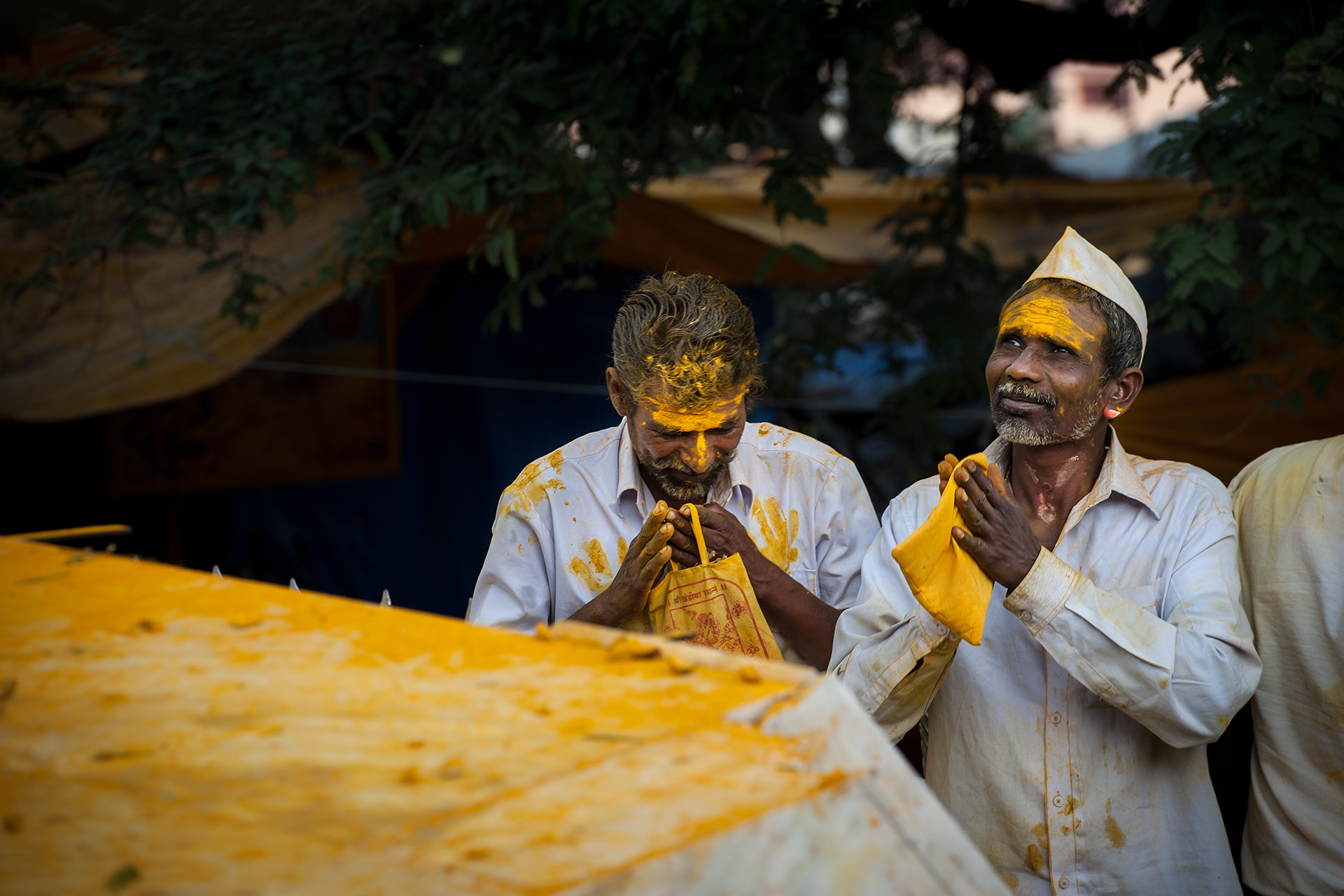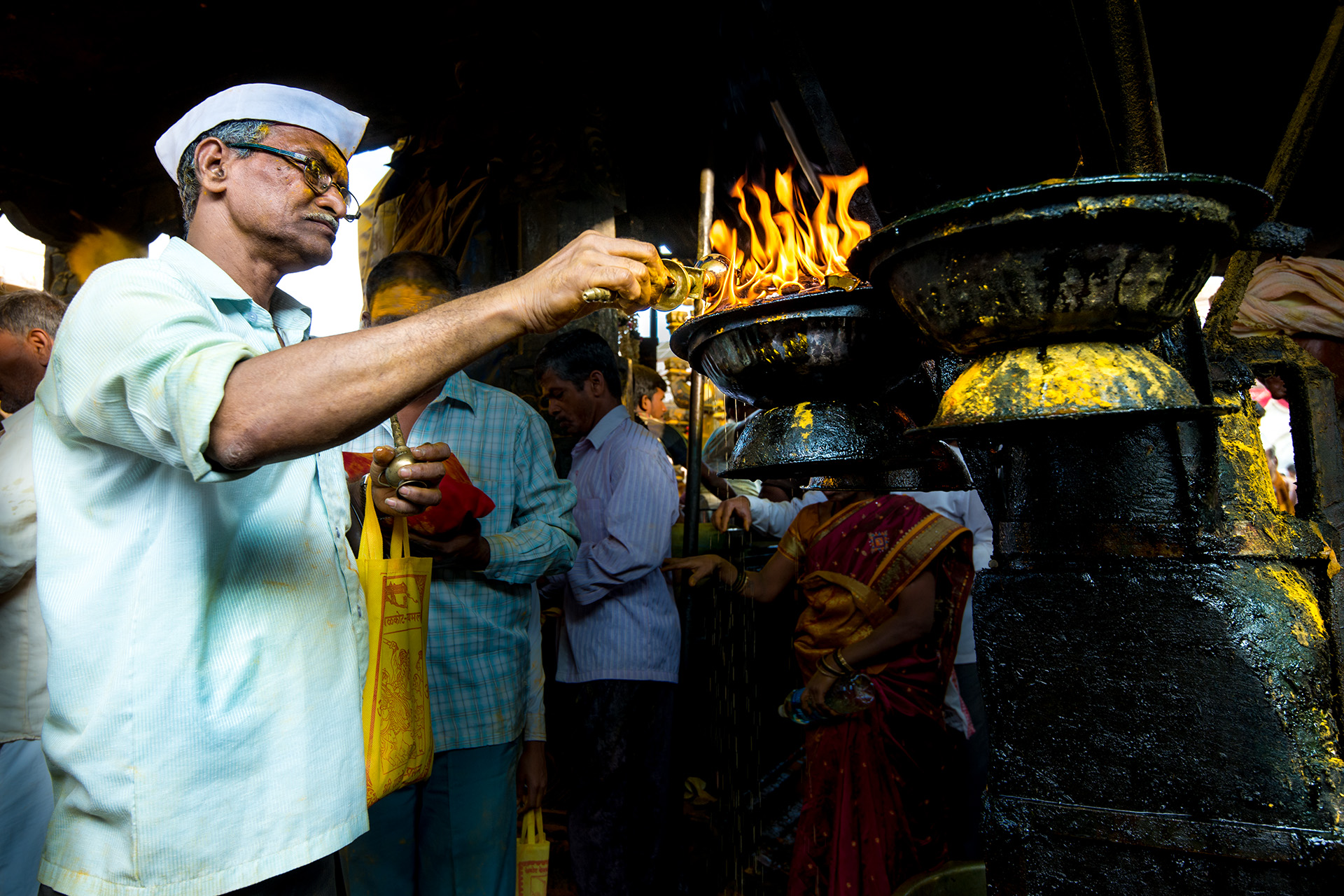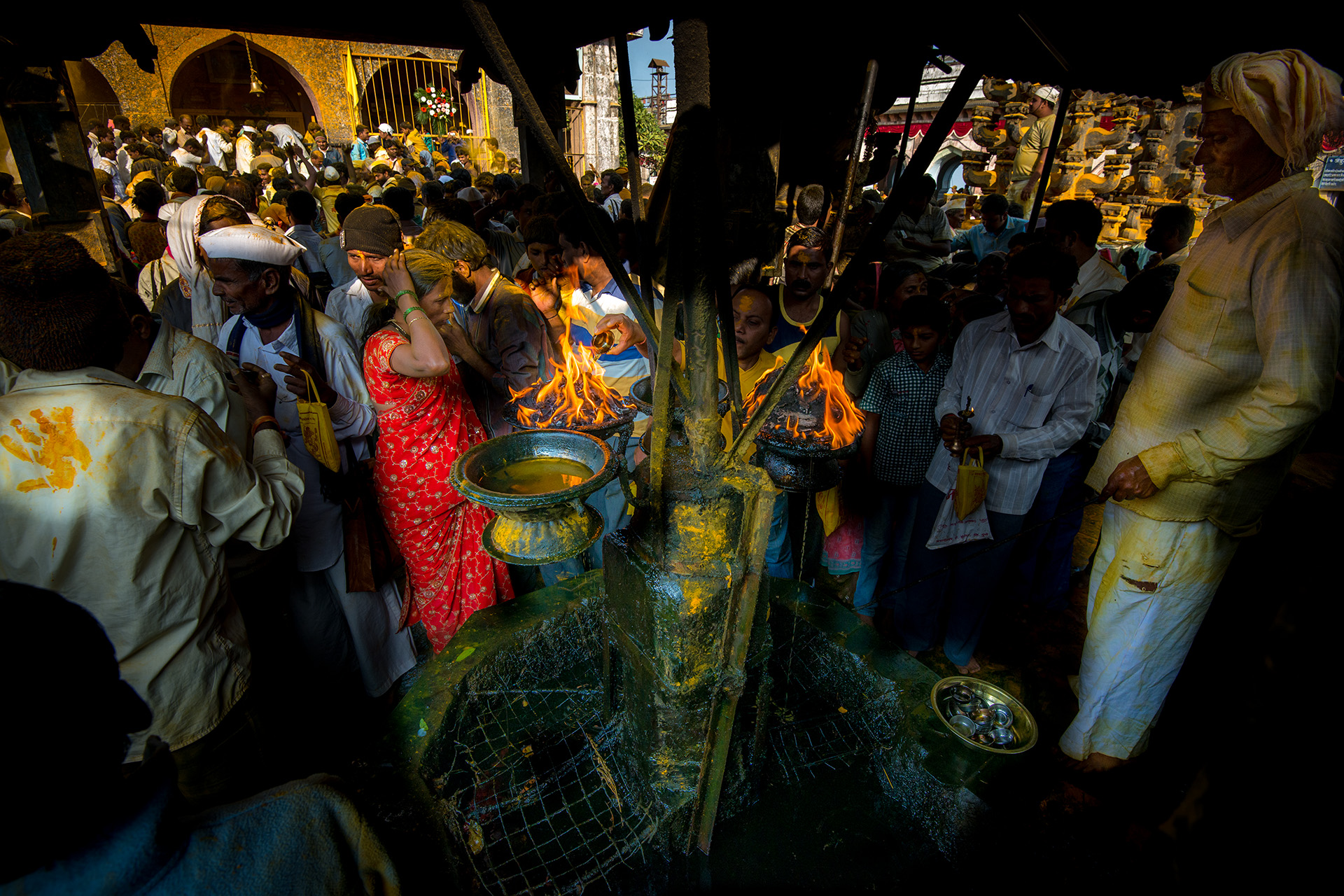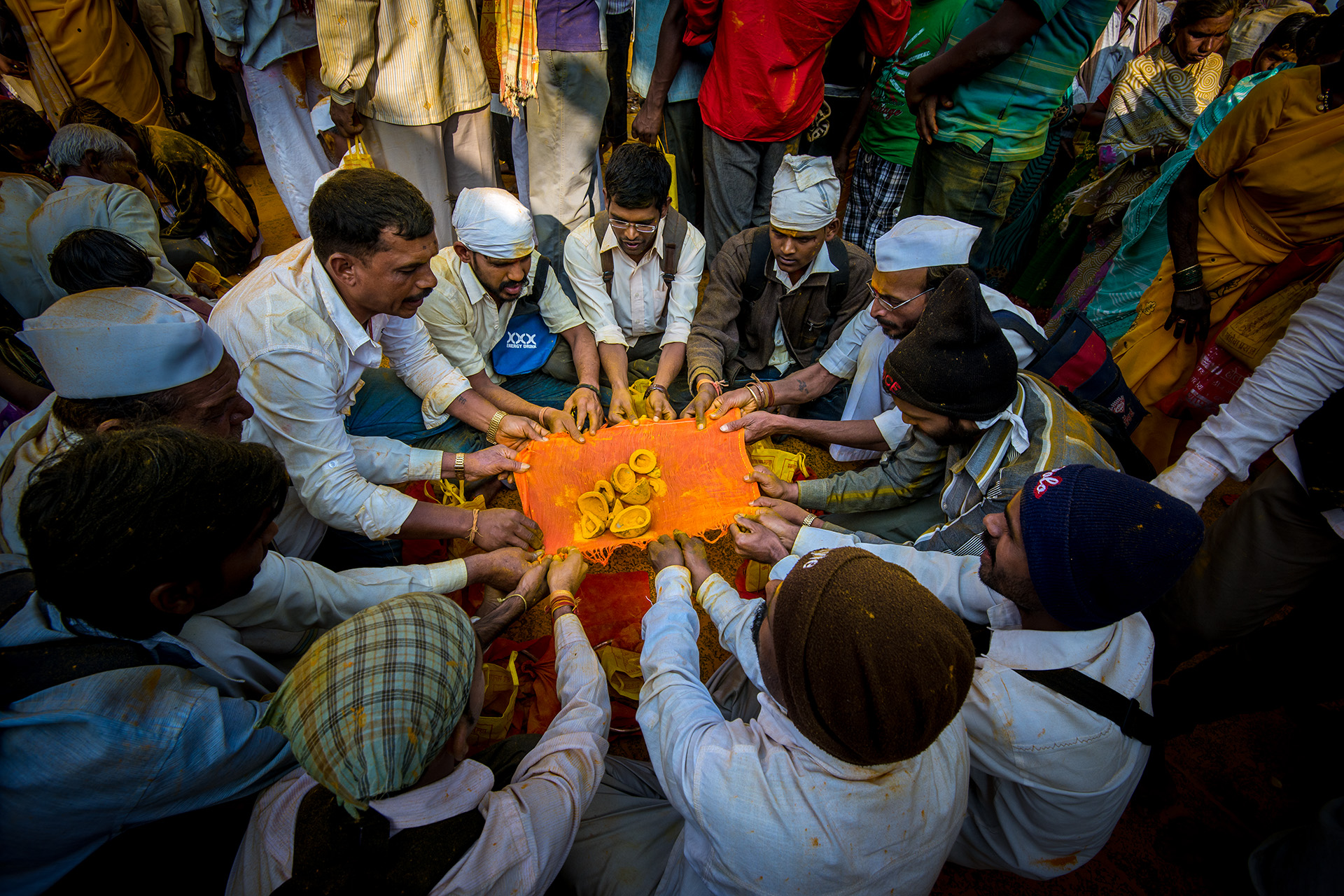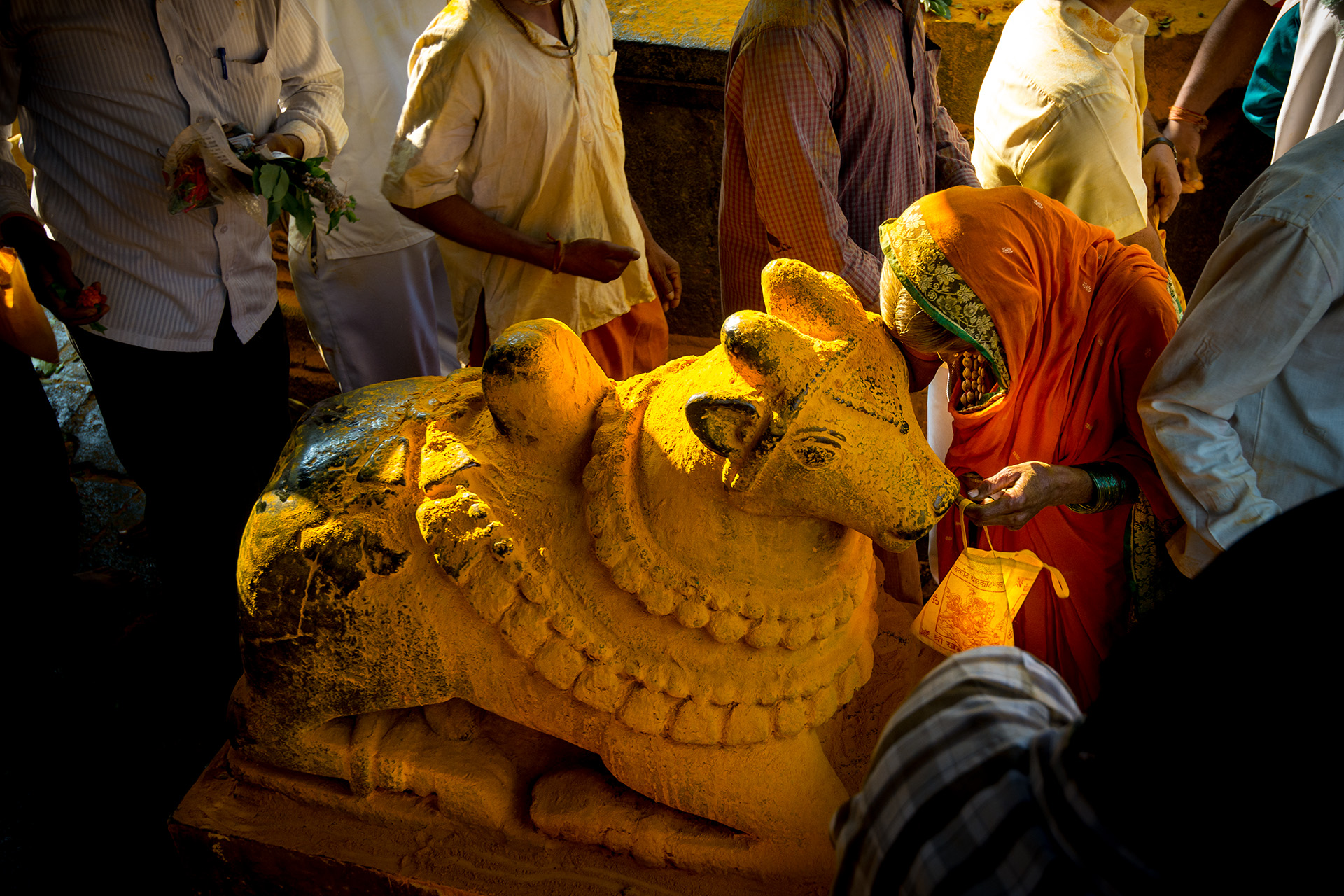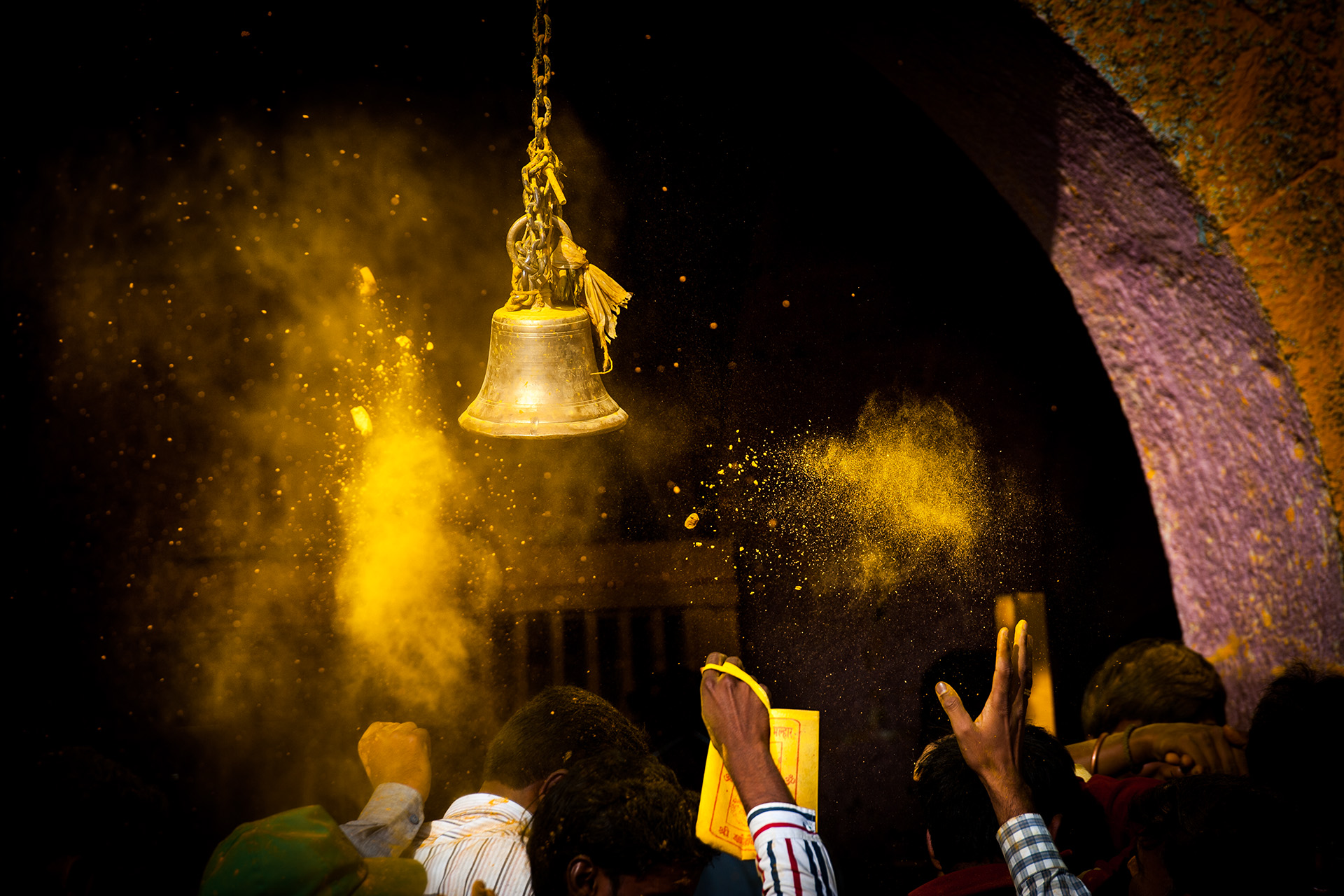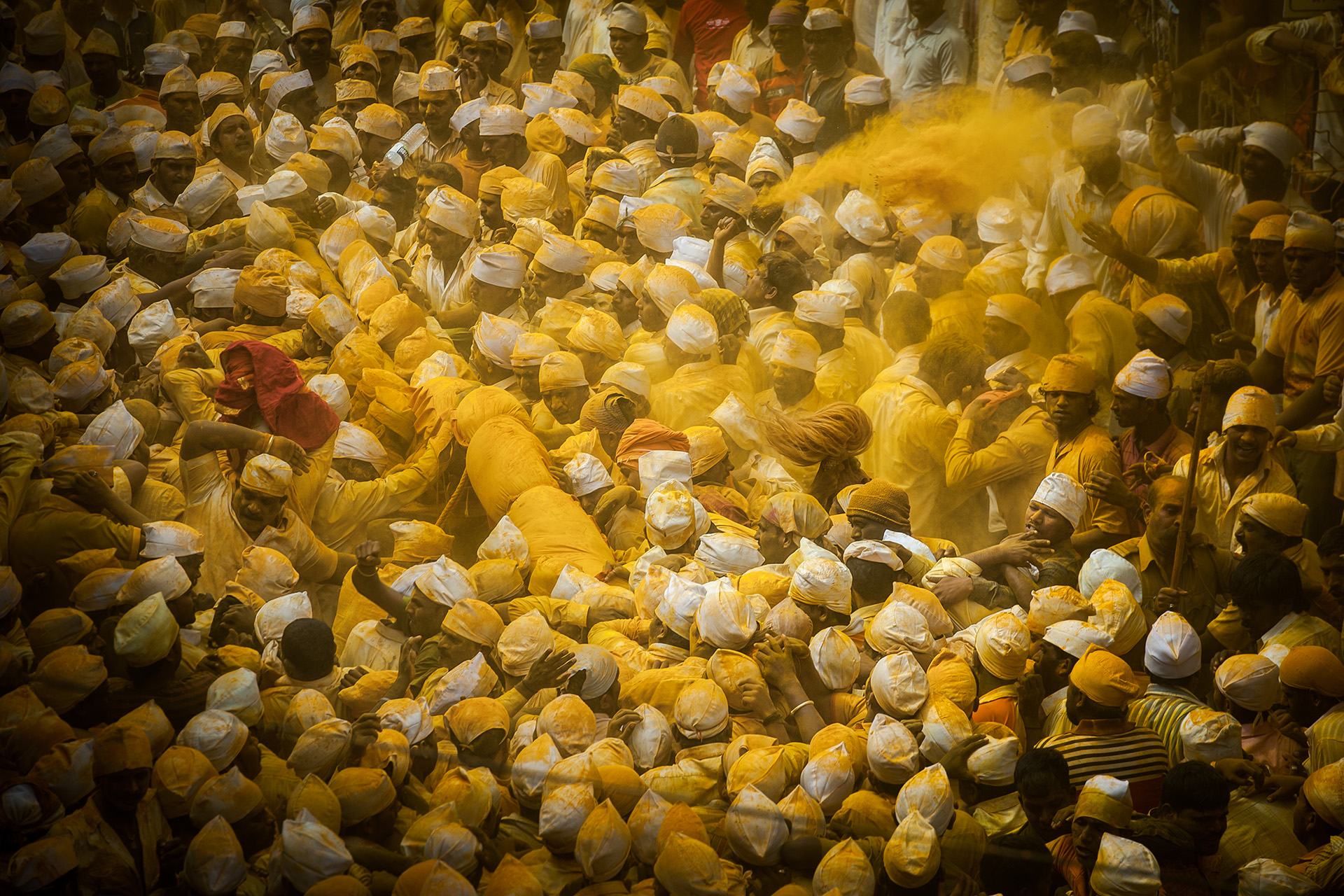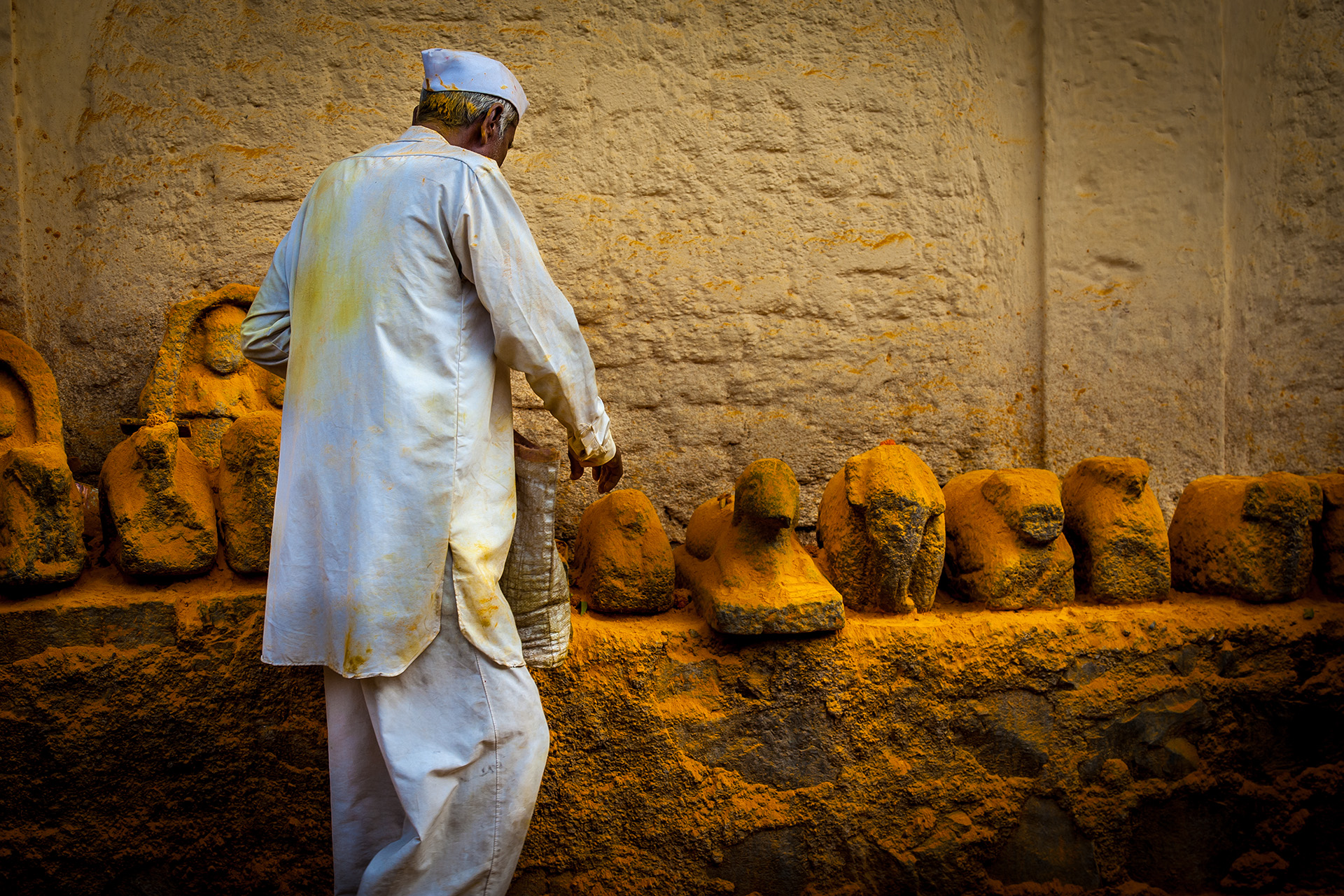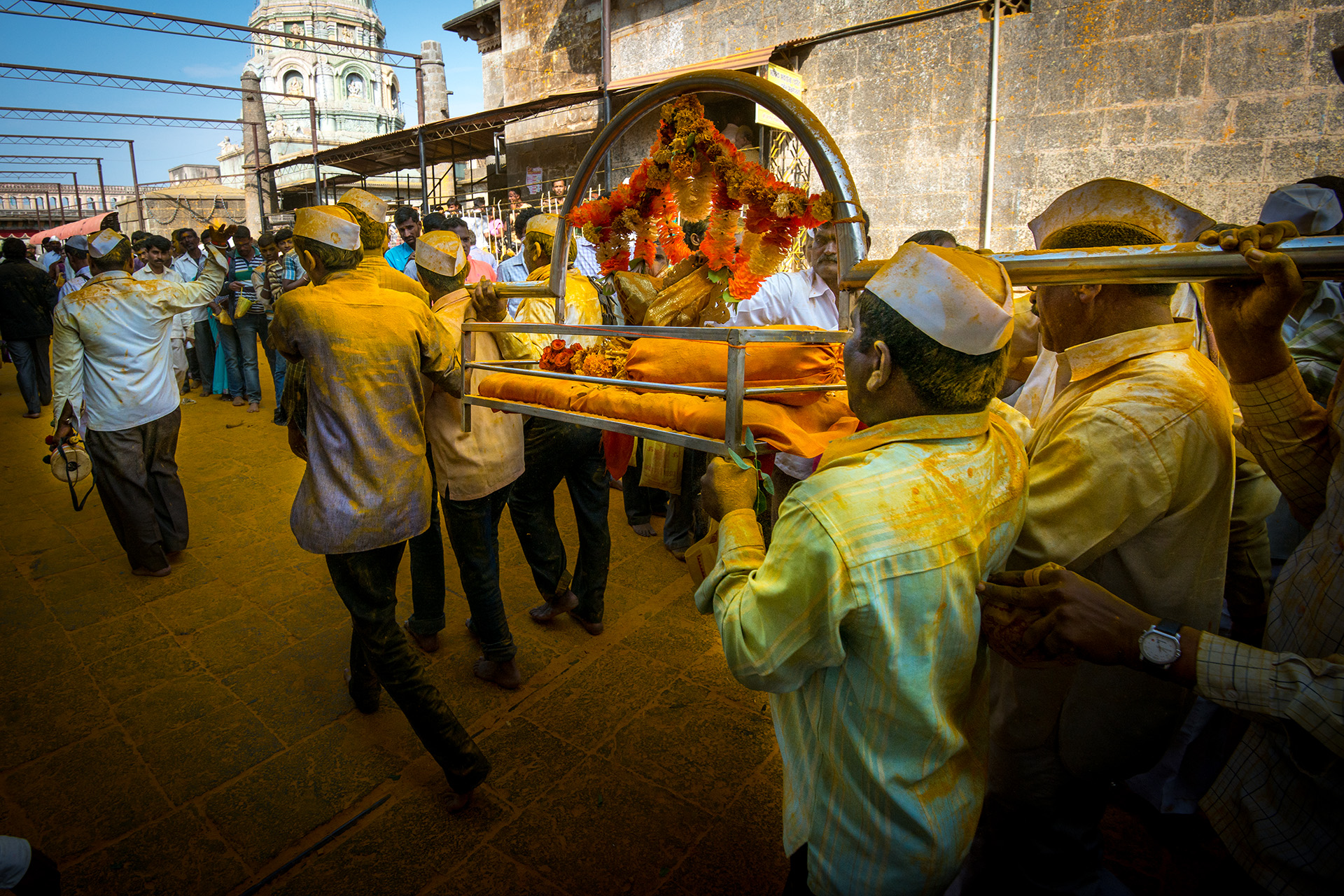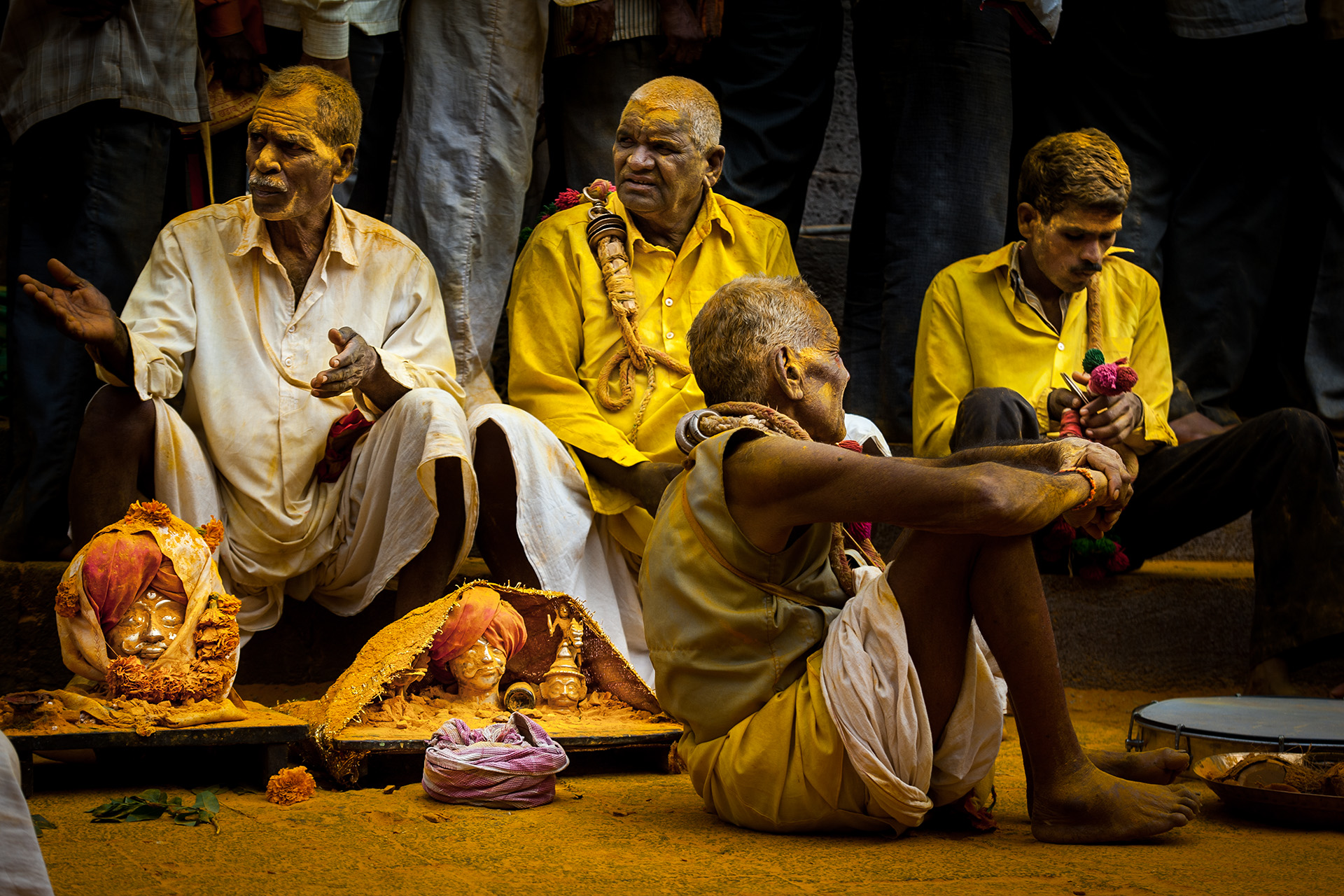The Golden Jejuri
Jejuri’s famous Somvati Amavasya festival, when the town dances the yellow dance with Lord Khandoba, falls on a Monday (Lord Shiva’s auspicious day) or Somvar, when the people of the town offer pure tumeric powder to the idols and to each other. The town swarms with locals dressed in white, devotees throng on the steps and streets of Jejuri offering bowls of golden purity and painting the town golden yellow; a color they associate with the power of the sun and one suggestive of Khandoba’s solar origin. Cries of ‘yelkot yelkot jal malhar’ resonate through the nooks and corners of the town… that’s when on realizes the sincerity of the love and admiration offered to the mighty Lord Khandoba. When the streets of Sonyache Jejuri- GOLDEN Jejuri- bathe themselves in the sea of yellows and canaries from the tumeric, that’s when one believes that Lord Shiva’s avatar tramped evil and led good to victory. And when the moon refuses to appear on the ‘amavasya’ (new moon) night, the ochre of the tumeric throws the town into a dim, serene glow. A six-day festival, from the first to sixth lunar day of the bright fortnight of the Hindu month of Margashirsha, in honour of Khandoba is celebrated at Jejuri Temple. At Somvati Amavasya festival in Jejuri, one may see devotees possessed by the power of God whipping themselves with horse-whips. By publicly practicing self-torture and, above all, by coming out of it unharmed, the Devotee shows everybody that the divine entity that is believed to descend upon him during the possession or the trance, has the faculty to make him insensitive to the stimuli of pain. Religious observance suggests that it has two main purposes. One is the hope of rooting out some physical appetite, thereby achieving purity and self-mastery, and thus merit. The other, much the main purpose, is to induce an ecstatic or transcendent state often interpreted by believers as contact with the divine.

